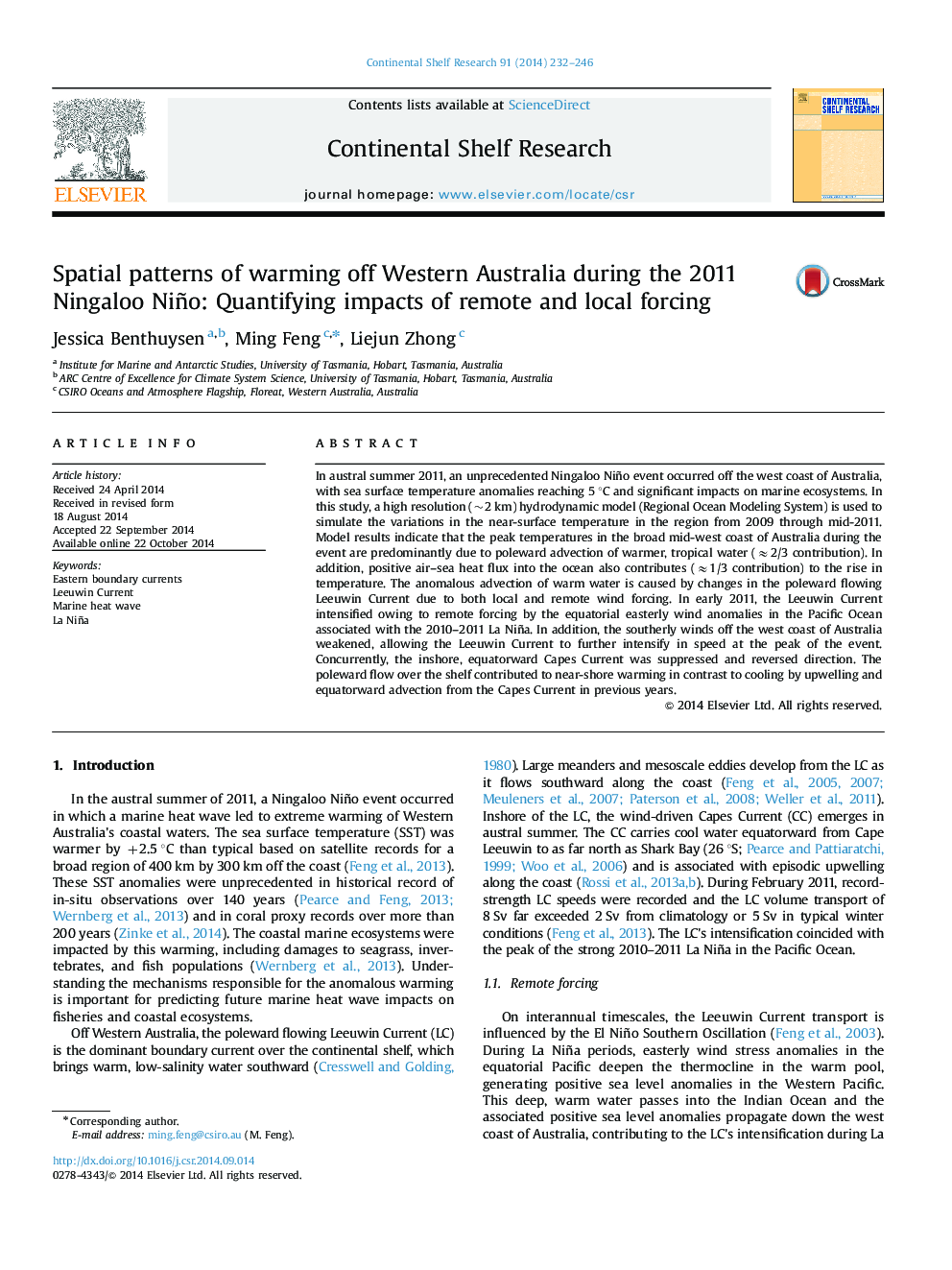| Article ID | Journal | Published Year | Pages | File Type |
|---|---|---|---|---|
| 4531734 | Continental Shelf Research | 2014 | 15 Pages |
•In the 2011 Ningaloo Niño, an ocean heat budget is constructed off Western Australia.•The roles of temperature advection versus air–sea heat flux are quantified.•The Leeuwin Current׳s poleward advection contributed to 2/3 of the warm anomaly; air-sea heat flux contributed to 1/3.
In austral summer 2011, an unprecedented Ningaloo Niño event occurred off the west coast of Australia, with sea surface temperature anomalies reaching 5 °C and significant impacts on marine ecosystems. In this study, a high resolution (~2 km) hydrodynamic model (Regional Ocean Modeling System) is used to simulate the variations in the near-surface temperature in the region from 2009 through mid-2011. Model results indicate that the peak temperatures in the broad mid-west coast of Australia during the event are predominantly due to poleward advection of warmer, tropical water (≈2/3 contribution). In addition, positive air–sea heat flux into the ocean also contributes (≈1/3 contribution) to the rise in temperature. The anomalous advection of warm water is caused by changes in the poleward flowing Leeuwin Current due to both local and remote wind forcing. In early 2011, the Leeuwin Current intensified owing to remote forcing by the equatorial easterly wind anomalies in the Pacific Ocean associated with the 2010–2011 La Niña. In addition, the southerly winds off the west coast of Australia weakened, allowing the Leeuwin Current to further intensify in speed at the peak of the event. Concurrently, the inshore, equatorward Capes Current was suppressed and reversed direction. The poleward flow over the shelf contributed to near-shore warming in contrast to cooling by upwelling and equatorward advection from the Capes Current in previous years.
